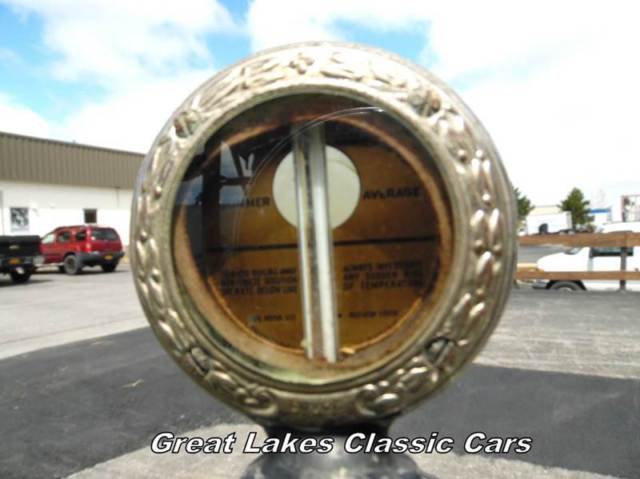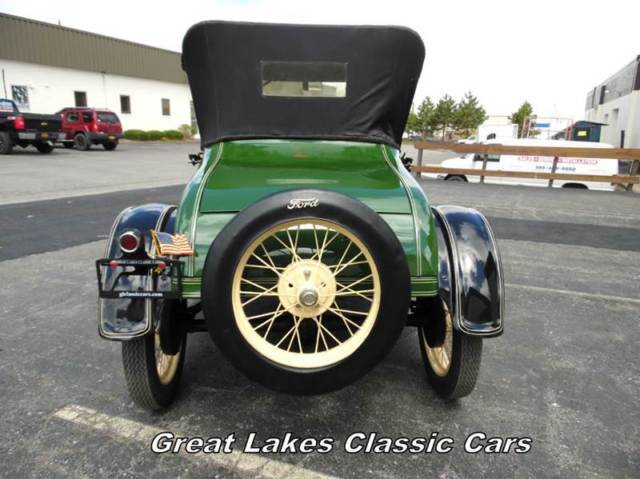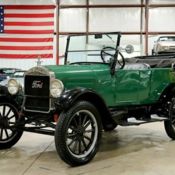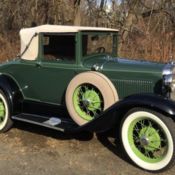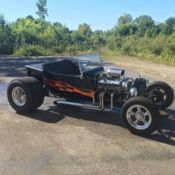1926 Ford Model T Roadster Green / Black Convertible Runs Beautiful Low Reserve
Price: -
Item location: Rochester, New York, United States
Description:
1926 Ford Model T Model-T Roadster
1926 Ford Model T Roadster The Ford Model T has an extensive history in the automotive market lasting for nearly 20 years. It is often called the 'Tin Lizzie' and the 'Flivver' and is credited with 'putting America on wheels.' During the early 1900's, the automobile was very new and the market place was adjusting to having these horseless carriages carry its passengers rather than bicycles or horses. Steam, electricity, and gasoline were the three means of powering the vehicles. Up until about 1915, no one really knew which would be the favorable power-source. Steam provided many benefits such as being quiet, clean, and cheap. Gasoline or kerosene fuel was used to heat water in a boiler; the steam produced was channeled to the cylinders, where the pressure drives the pistons up and down. The shortcomings were that it took a while to start, having to wait for the steam to prepare. It was dangerous, often exploding and causing injury. It had a limited range, lasting about 20-40 miles before requiring a refueling. Electricity was popular but it too had a limited range. It was easy to start and was very popular with the ladies for driving around town. Then there was gasoline, which was dirty and hard to start. It required fueling stations which were sometimes difficult to find in this new and evolving marketplace. The main benefit of the gasoline engine was that it had the most potential and an ever increasing amount of power. It was said that how a vehicle finished on the race track often determined the success of sales. With gasoline engines winning most of the races, the other sources of power were eventually doomed. There were over 200 automobile manufacturers during the early 1900's. The average production figures for a factory were a couple hundred vehicles a year. This of course varied greatly due to the complexity and prestige of the vehicle being produced. Henry Ford, founder of the Ford Motor Company, produced a vehicle that was affordable, but more importantly, mass produced. By using an assembly line to construct parts, rather than the traditional hand assembly, the process was streamlined. Using an assembly line process was not new, it had been done before in the meat packing industry. William C. Klan had visited a slaughterhouse in Chicago. Upon returning from his visit, he proposed the idea to Peter Martin. A team was assembled and perfected through trial and error. The assembly line did not begin operation on the Model T until 1914. The assembly line process streamlined the production greatly, now averaging just over 90 minutes to assemble a car. During 1914, there were more Ford's produced than all other manufacturers combined. At that point 'you get it in any color you wanted so long as it was black'. Henry Ford favored the black color because it dried the fastest. During the years 1917 through 1923, Ford did not do any advertising, with 9 out of 10 cars being Fords, none was necessary. He paid his workers a wage proportionate to the cost of the automobile, so they would be able to buy what they produced. By introducing these innovations, his factories were able to out produce and outsell the rest of the industry and mobilize the country. When production of the Model T began, the cost was around $850, around $1200 less than most cars. By the early 1920's, the price of the Model T cost about $300. Ford had found many ways to cut costs and offer the least-expensive product. He instructed his suppliers how to assemble the wood crates that were used to ship him parts. The crates were then dismantled and used within the bodies of the car. The scrapes were made into charcoal and sold under the name 'Kingsford'. The first Model T was produced on September 27th, 1908 at the Piquette Plant in Detoit, Michigan. There are two classes of the Model T, those that were produced before 1919 and after 1919. The pre-1919 Model T's are known as veteran cars while the later models are called vintage cars. This Model T is a great example of an original preserved automobile! Serviced and maintained over the past 90 years with care and lots of love by its hard to believe 2nd owner. It was part of a small fleet of early 20th Century vehicles and they all had a unique place in automotive history. The sheet metal has stood the test of time extremely well and the Engine Start Crank still accompanies the vehicle though it has had ignition and battery added over the years so your shoulder doesn't have to worry. Interior is as plain as can be and there really isn't any high tech options to worry about. Simplicity is good and is well represented in this vehicle. The top has a couple tears and can be either repaired or replaced as you prefer, it folds easily and looks great down. It has headlights, horn, side spot, tool box, and side boards which were all options added. Very Nice Indeed and parade ready. Own a drivable and appreciating piece of automotive history for many more years to come. Happy Holidays from Great Lakes Classic Cars. We sell and Ship Worldwide!Vehicle Details:
- Condition: Used
- Make: Ford
- Model: Model T
- SubModel: Model-T Roadster
- Type: --
- Trim: Model-T Roadster
- Year: 1926
- Mileage: 1
- VIN: 13695957
- Color: Black
- Engine size: 4-Cyl
- Power options: --
- Fuel: Gasoline
- Transmission: Manual
- Interior color: Black
- Options: --
- Vehicle Title: Clear Want to buy? Contact seller!



